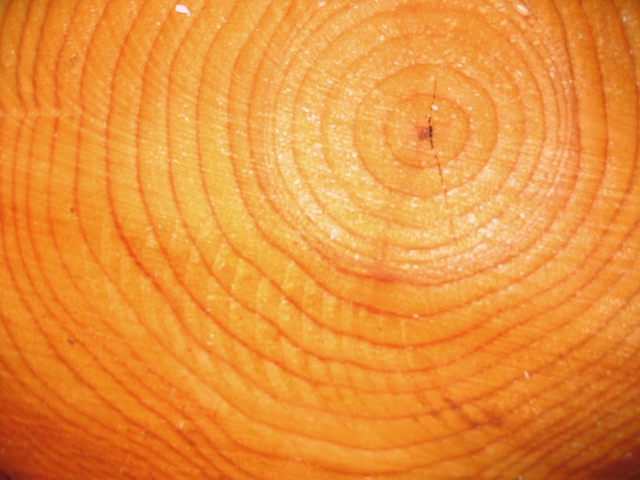A tree is a woody plant with a single
trunk that branches out at the top. Trees are perennial, meaning that they can
live for many years. Tree height varies widely across the planet. Some California redwoods are more than 350 feet high, while the world's shortest tree,
Greenland's dwarf willow, grows to be less than two and a half inches.
What causes tree rings?
The outer bark of a tree trunk
consists of dead tissue, while the inner parts of the trunk are alive. New
yearly trunk growth is added on between the inner old wood and the bark
outside. Individual rings form because tree cells grow differently from the
beginning to the end of a growing season. Each tree ring consists of two layers.
A light-colored layer is formed when the tree grows rapidly in the spring;
slower growth in the late summer and early fall causes a second, darker layer
to form. Tree rings are only found in temperate climates. Tropical trees grow
year-round, so they do not form rings.
When you look at a cross-section of a
cut tree trunk, inner rings are the oldest. The rings' shape and width can tell
you about the tree's life. Scars in the rings are usually caused by fire; if
growth is limited by rainfall, wetter years tend to yield thicker rings. Narrow
rings indicate tree stress, perhaps from drought or pests.
Photo credit: Lawrence Murray, via Flickr (cc by 2.0)
This information was first posted at the Audubon Naturalist Society. Come visit Woodend!

No comments:
Post a Comment